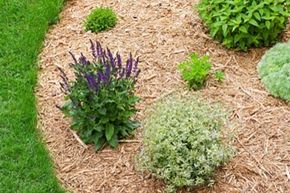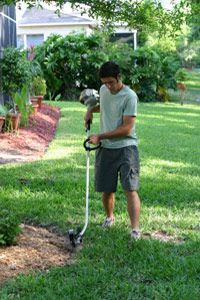You've mowed, weeded and raked -- but you're not finished yet. No matter how perfectly cropped your lawn may be, it will end up looking sloppy if you don't pay attention to the edges. That thin strip of grass that lines your driveway and walkways and surrounds your flowerbeds and patios is every bit as important as the large expanse of grass inside it.
When it comes to edging your lawn, your garden-variety mower just isn't going to cut it. It's far too wide to handle the delicacy needed to give the areas around your mailbox, light poles and trees nice sharp edges. No, you need to get yourself a good lawn edger, and learn how to use it properly. Or, if you're willing to spend a little extra cash, you can hire a professional landscaper to do the work for you (edging should be included in your regular package of lawn care services).
Advertisement
You can also create defined borders using bricks, stones or other materials. These edges aren't only for decoration. In fact, they shouldn't stand out or draw attention away from your lush lawn. They're more functional than aesthetic -- a way to separate one section of your landscape from another. The goal is to improve the look of your lawn, and make it easier to maintain.
Edging -- no matter how you do it -- is an easy and relatively inexpensive way to give your lawn a well-manicured look, add value to your property, and give you a clean line for mowing and trimming. Read on for some tips on how to edge like the pros.
Advertisement




